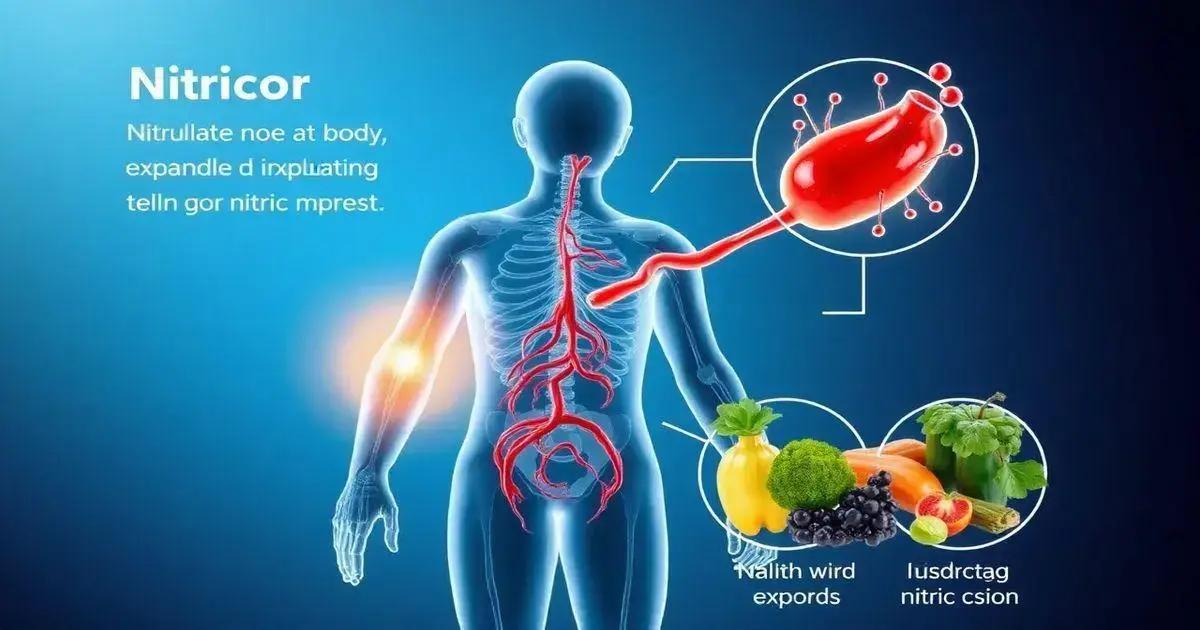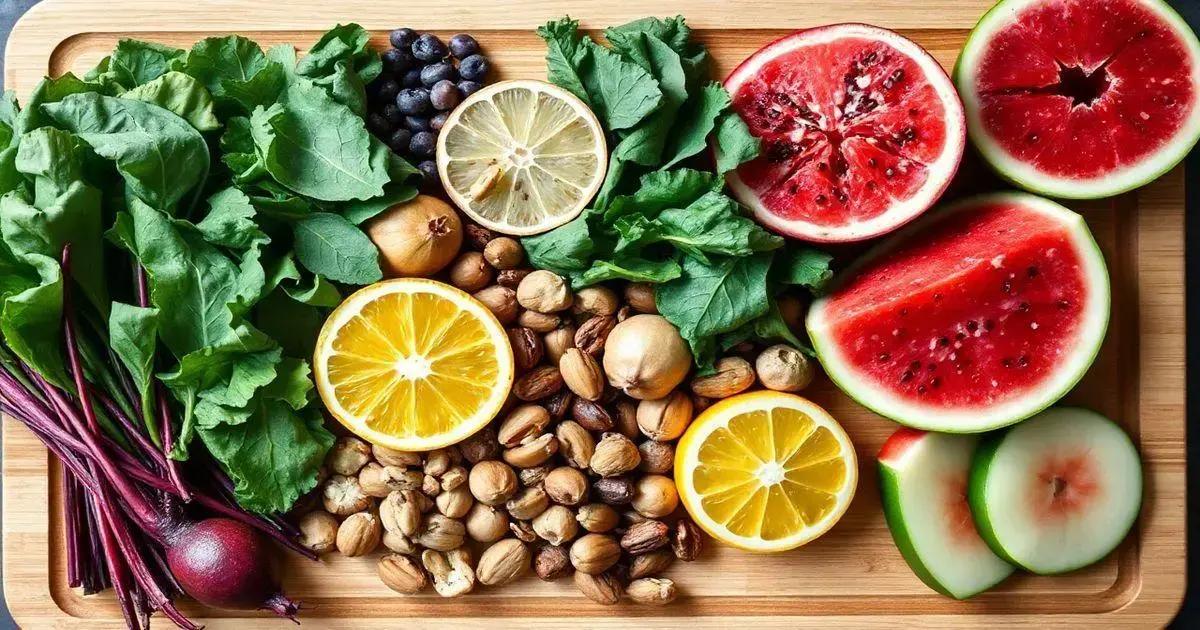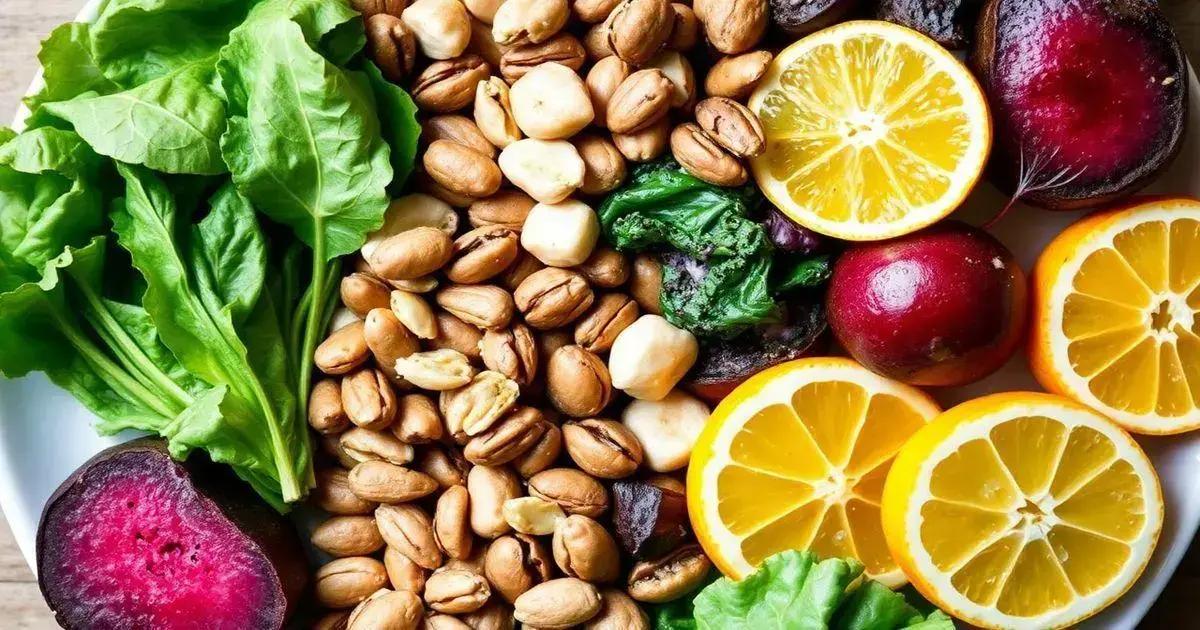Improving circulation can be achieved by incorporating foods rich in nitric oxide, such as beets, leafy greens, citrus fruits, and nuts, which enhance blood flow and overall cardiovascular health.
Are you looking to enhance your circulation? Foods rich in nitric oxide can play a vital role in improving blood flow and overall health. In this article, we will dive into what nitric oxide is, explore the best foods to increase its levels, discuss the benefits of better circulation, and provide practical tips for incorporating these foods into your diet.
What is Nitric Oxide?

Nitric oxide is a crucial molecule that plays a significant role in various bodily functions. It is primarily known for its role as a vasodilator, meaning it helps relax and widen blood vessels, which improves blood flow. This function is particularly important for maintaining healthy circulation.
Nitric oxide is produced naturally in the body from the amino acid arginine, and its production can be boosted by consuming certain foods rich in nutrients. These foods are essential for supporting overall cardiovascular health and can aid in conditions such as high blood pressure.
Moreover, nitric oxide is involved in several vital processes, including regulating blood pressure, immune response, and neurotransmission. It helps communicate between cells, ensuring that your body functions properly.
How is Nitric Oxide Produced?
The body produces nitric oxide through a process called nitric oxide synthase (NOS), which converts arginine into nitric oxide and citrulline. This process occurs in endothelial cells, which line blood vessels, and is stimulated by factors such as physical activity, healthy diet, and overall vascular health.
The Importance of Nitric Oxide for Health
Maintaining adequate levels of nitric oxide is essential for promoting healthy blood circulation. Low levels of nitric oxide can lead to various health issues, including cardiovascular diseases. By understanding the significance of this molecule and how to enhance its production through diet, individuals can take proactive steps towards improving their circulation and overall health.
Top Foods to Boost Nitric Oxide Levels

To enhance your body’s nitric oxide production, including certain foods in your diet is essential. Here are some of the top foods that can help boost nitric oxide levels:
1. Beets
Beets are known for their high nitrate content, which is converted into nitric oxide in the body. Incorporating beets into juices or salads can significantly enhance blood flow.
2. Leafy Greens
Greens like spinach, kale, and arugula are also rich in nitrates. They are versatile and can be easily added to smoothies, salads, or cooked dishes to improve circulation.
3. Nuts and Seeds
Nuts, especially walnuts, and seeds, particularly flaxseeds and chia seeds, provide arginine. This amino acid boosts nitric oxide production and supports heart health.
4. Citrus Fruits
Citrus fruits such as oranges, lemons, and grapefruits enrich your diet with vitamin C. This vitamin helps protect nitric oxide molecules from oxidative damage, allowing them to function better.
5. Pomegranate
Pomegranate is another powerful fruit that promotes nitric oxide levels due to its high antioxidant content, which supports vascular health and endothelial function.
6. Watermelon
Watermelon contains an amino acid called citrulline, which the body converts into arginine and then into nitric oxide, making it a refreshing choice for enhancing circulation.
By including these foods in your meals, you can naturally support your body’s production of nitric oxide and improve your overall cardiovascular health.
Benefits of Improved Circulation

Improved circulation brings many benefits to your body and overall health. Here are some key advantages of enhancing your blood flow:
1. Enhanced Nutrient Delivery
With better circulation, nutrients from food are transported more efficiently to your cells. This ensures your body has the energy it needs to perform daily activities.
2. Increased Oxygen Supply
Improved blood flow also leads to a higher oxygen supply to vital organs and tissues. This boost can enhance physical performance and endurance during exercise.
3. Better Detoxification
Better circulation supports your body’s natural detoxification processes. Blood flow helps remove waste products and toxins, keeping you healthier.
4. Regulated Blood Pressure
When your blood vessels are more efficient, it can help regulate blood pressure levels. This is important for reducing the risk of heart disease and stroke.
5. Enhanced Mood and Cognitive Function
Increased circulation can improve mood and cognitive functions. When your brain receives adequate blood flow, it functions better, leading to improved focus and mental clarity.
6. Reduced Risk of Diseases
Healthy blood circulation can lower the risk of chronic diseases, such as diabetes and cardiovascular issues. It promotes better heart health and helps maintain a healthy weight.
By focusing on enhancing circulation through foods rich in nitric oxide, you can enjoy these benefits and improve your overall well-being.
Tips for a Nitric Oxide-Rich Diet

To maintain a nitric oxide-rich diet, incorporate the following tips into your daily eating habits:
1. Eat More Leafy Greens
Include a variety of leafy greens like spinach, kale, and swiss chard in your meals. These greens are packed with nitrates that boost nitric oxide levels.
2. Include Beets in Your Diet
Add beets to your salads, smoothies, or as a side dish. Beets are highly effective at increasing your body’s nitric oxide production.
3. Snack on Nuts and Seeds
Opt for nuts and seeds, particularly walnuts and flaxseeds, as snacks. These are rich in arginine, which helps produce nitric oxide.
4. Drink Citrus Juices
Start your day with a glass of citrus juice, like orange or lemon juice. The vitamin C in citrus fruits supports the stability of nitric oxide in the body.
5. Stay Hydrated
Ensure you drink enough water throughout the day. Proper hydration is critical for maintaining good blood flow and nitric oxide levels.
6. Limit Processed Foods
Avoid processed foods and sugars. These can negatively affect vascular health and blood flow.
7. Engage in Physical Activity
Combine your dietary changes with regular exercise. Physical activity enhances nitric oxide production and improves circulation.
By following these tips, you can create a diet that naturally boosts nitric oxide levels and supports better circulation.
Improving Your Circulation Naturally
By incorporating foods rich in nitric oxide into your diet, you can significantly enhance your circulation and overall health. Foods such as beets, leafy greens, nuts, and citrus fruits provide essential nutrients that boost nitric oxide levels in the body.
Understanding the benefits of improved circulation, including better nutrient delivery and increased oxygen supply, highlights the importance of a well-balanced diet and regular physical activity.
Implementing the tips discussed can lead to a healthier lifestyle and a reduced risk of cardiovascular issues. Remember, maintaining a nitric oxide-rich diet not only improves blood flow but also supports your body’s needs for optimal functioning.
Take charge of your health today by making these simple dietary changes and experiencing the numerous benefits of enhanced circulation.
FAQ – Frequently Asked Questions about Improving Circulation with Foods Rich in Nitric Oxide
What is nitric oxide and why is it important for circulation?
Nitric oxide is a molecule that helps relax and widen blood vessels, improving blood flow and supporting cardiovascular health.
Which foods are best for boosting nitric oxide levels?
Foods such as beets, leafy greens, citrus fruits, nuts, and watermelon are excellent for increasing nitric oxide in the body.
How can I tell if my circulation is improving?
Signs of improved circulation may include increased energy, better exercise performance, reduced cold extremities, and overall enhanced well-being.
Can exercise also help increase nitric oxide levels?
Yes, regular physical activity enhances the body’s production of nitric oxide, further improving circulation and heart health.
Are there any risks associated with dietary changes to increase nitric oxide?
While most dietary changes are safe, it’s essential to consult with a healthcare professional, especially if you have underlying health conditions.
How long does it take to see results from dietary changes?
Results can vary, but many people may notice improvements in their circulation and overall energy levels within a few weeks of adopting a nitric oxide-rich diet.












